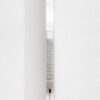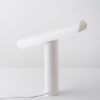Brice Marden (1938 – 2023) was an American artist who created a unique blend of minimalist abstraction and gestural elements. In this portrait, we take a look at his monochromatic early work from the 1960s to the early 1980s. Interestingly, Brice Marden also does not include himself among the Minimalists Artists – as most do – but rather among the Abstract Expressionists.1
Brice Marden was born on October 15, 1938, in Bronxville, New York. He began his art studies at Boston University School of Fine and Applied Arts and later received his Master of Fine Arts from the prestigious Yale School of Art and Architecture.
Marden’s early works are characterized by his fascination with monochrome color surfaces and a minimalist aesthetic. In the 1960s, he began creating large-scale canvases with single colors that impressed with their subtle differences in hue and texture. Nature, ancient Greek art, and artists such as Jasper Johns, Alberto Giacometti, and Robert Rauschenberg, for whom he worked as a studio assistant, were an inspiration for him at this time.
The fascinating works of Mark Rothko also influenced the artist. In an interview with Simon Grant for Tate, he recounts the first time he saw a Rothko painting. “It was in 1958 at the Sidney Janis Gallery in New York. […] When it’s just you and some of these paintings in a room, it’s an incredible experience. […] When you stand in front of them, you are transported into a completely different world. […] So I stood in front of these paintings and tried to understand them, and I realized that what I liked about Abstract Expressionism was that it wasn’t worth approaching it too analytically. It was better to just get involved with the painting.”
I think abstraction is a very rich area. And it is upsetting that people seem to have some fear of it. I’m constantly making these statements about how you should just look at it and react to it on your own; just relax and let go.
Brice Marden
What was special about his works at this time was that he combined two essential aspects of modern painting – first, the gestural expressiveness that was characteristic of Abstract Expressionism, and second, the tendency toward reduction.2 His approach was both precise and intuitive, and he experimented with various techniques to work the surface of the canvas to create depth and dimension. His art challenges the viewer to engage intensely with the paintings, discovering new facets each time.
In the 1980s Marden changed his painting style and turned from monochrome surfaces to expressive, gestural painting. An important role in this development was a commission to design the choir windows of the Basel Cathedral in Switzerland. Over a period of seven years, Marden spent a lot of time in Basel.3
During this time, he also traveled to East Asia several times, where he discovered the world of calligraphic characters. This influenced his work so much that from then on, he explored the imagery of writing and initially turned away from monochrome painting. For these new kinds of works, characterized by dense networks of lines, he often mounted his brush on a long stick. This allowed him to reduce the control over his own hand and paint intuitively from the gut, almost meditatively and without a conscious mind.3
After more than three decades, Marden turned increasingly to the monochrome again. In his work, he maintains intuition and abstraction as a consistent leitmotif throughout his career. Whether in his minimalist works or in the more gestural, complex compositions of his later years, Marden relies on his inner sensibilities and artistic vision to guide him. In this way, he created unique, touching, and timeless works of art.
Further Reading / Resources
1 https://www.tate.org.uk/tate-etc/issue-14-autumn-2008/landscapes-mind
2 https://kunstmuseumbasel.ch/de/ausstellungen/2022/brice-marden
3 https://www.nzz.ch/feuilleton/amerikanische-abstraktion-brice-marden-im-kunstmuseum-basel-ld.1683893
https://www.interviewmagazine.com/art/brice-marden
https://www.moma.org/artists/3758
https://www.glenstone.org/art/exhibition/brice-marden/


